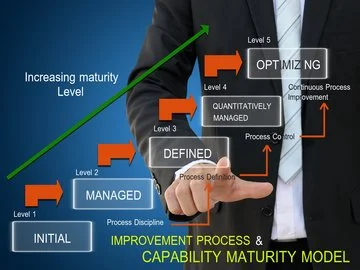Project Risk Management

Risk Management in Project Management
Project management is a field of multiple inter-connected disciplines – one of which being risk management. The two are seamlessly connected for the simple reason that every business project is by its very nature a risk. Unable to accurately predict future outcomes, we take risks every time we try something new, set out in a new direction or in any way change our current approach to business. Which in turn means that when it comes to project management, enhanced management of risks has a direct impact on the overall outcome.
The Risk Management Process
There are essentially five steps to the risk management process, which are as follows:
- Identify and Evaluate – Largely self-explanatory, this is the process whereby risks are identified and considered in accordance with their severity and who they pose a threat to. Risks should always be prioritised accordingly.
- Allocation of Ownership – The next step is to determine who is responsible for/has control over the risk, along with what to do/who to call in the event of its realisation.
- Plan for Mitigation – This is followed by determining the best way of reducing or avoiding the consequences of the identified threats, or eliminating them altogether.
- Action – A strong risk management strategy is nothing without being put into action, which is the next step in the process.
- Evaluation – Following implementation, the effectiveness of the strategy must be considered, in order to apply changes and improvements where required.
Throughout the Project Management Process
Risk management is of critical important to risk managers, throughout each stage of the project’s process. From planning to preparation to implementation and subsequent evaluation, risk management is an inherent element at the heart of any successful project.
Planning
By identifying and assessing every relevant internal and external threat, risk management strategies come into play from the earlies project planning stages. Risks are considered in accordance with their likelihood of occurrence, their potential impact on the project and ultimately the action required to minimise or avoid them. Risk management considerations can mould, shape and alter the direction of business projects drastically, before they are even put into action.
Preparation
Successful projects often involve multiple stakeholders, contributors and service providers – all of which bring their own unique risks into the equation. When the projects specific have been decided upon, preparing for implementation represents a critical juncture for risk management. Once again, it’s a case of identifying and evaluating each and every threat to project, including those posed by stakeholders and third-parties.
Implementation
Throughout the process, risk management should be seen as dynamic and ongoing. At the implementation phase, the work of the risk manager is far from over as it is only now that perceived and predicted risks are given the opportunity to manifest and present themselves. New risks will emerge along the way, unexpected threats will impact performance and contingency measures may be called for. It is in the implementation stage that the importance of risk management in the prior two stages becomes very apparent.
Evaluation
Carrying out an evaluation of the project’s success effectively gives risk managers a blueprint for wall-to-wall improvements and optimisation. Which risk predictions proved accurate, which opportunities were missed, every accurate projection – all invaluable data to be used for ongoing refinement. And should the project as a whole fail to succeed as planned, the evaluation stage will shed light on the specific risks and threats that contributed to its collapse.
An Essential Insurance Policy
One of the best ways of looking at risk management from a project management perspective is as something of an essential insurance policy. There is nothing in existence that can guarantee the success of any given project – not until we master the art of accurately predicting the future. As such, it simply makes sense to safeguard he best interest of the business and its intentions by proactively minimising and controlling all relevant threats.
Risk management is by no means a flawless concept or one that can guarantee successful outcomes. Without enhanced risk management however, the likelihood of outright failure takes an enormous step in entirely the wrong direction.